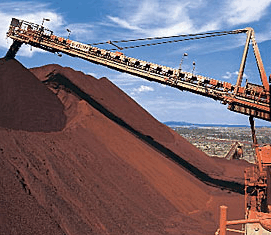
The Australian Bureau of Statistics (ABS) has today released statistics on mining employment across Australia. According to the ABS, the number of people employed directly in mining has more than tripled since 2000, peaking at 276,300 in May 2012 (see next chart).
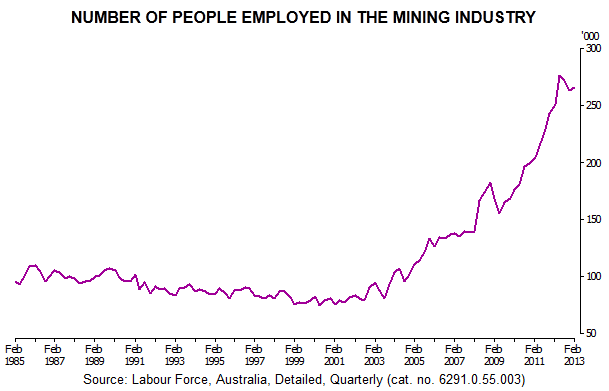
According to the 2011 Census, Perth was by far Australia’s biggest mining area as defined by the number of its usual residents working in the mining industry. In 2011, nearly 22% of Australia’s mining industry workforce usually resided in Perth, up from 18% in 2006 (see next table).
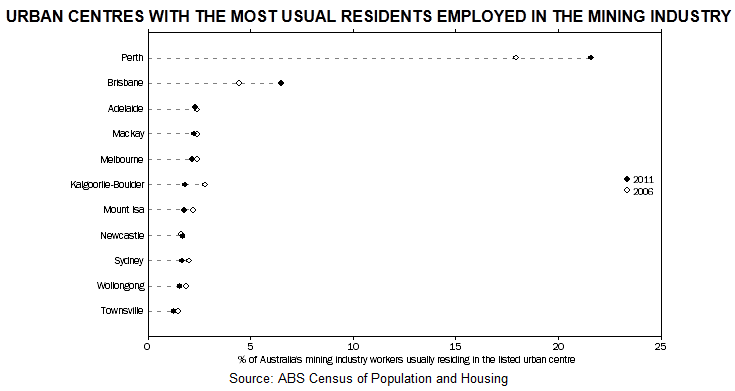
Perth’s oversized share is largely because it has a large number of administrative and other ‘white collar’ workers employed by mining companies, as well as many who work in remote mines on a ‘fly-in, fly-out’ or ‘drive-in, drive-out’ basis (see next table).
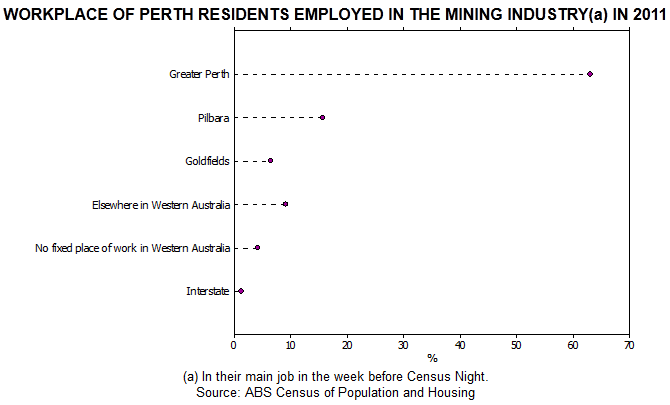
The impact of ‘fly-in, fly-out’ or ‘drive-in, drive-out’ workers on mining towns is illustrated by the below table, which shows a big divergence between populations on Census night and respondents’ usual place of residence:
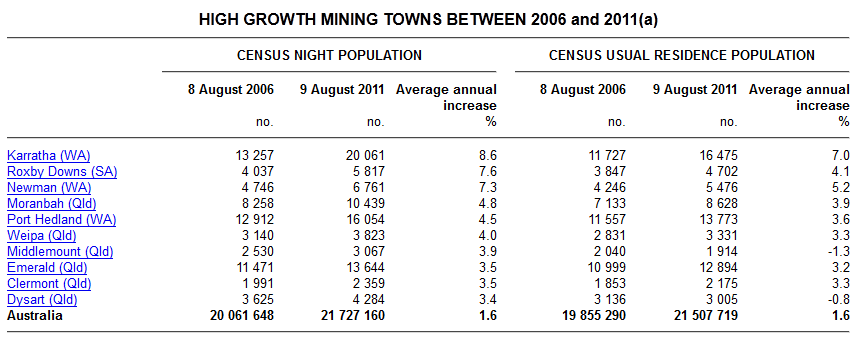
While the number of people staying in these ten urban centres on Census Night (i.e. their Census enumerated populations) increased between 2006 and 2011, the number of people usually residing in them according to the Census (i.e. their Census usual resident populations) either increased at a slower rate or decreased over the same period. Compared with Census Nights in 2001 and 2006, there were more people in the high growth mining towns on Census Night in 2011 who said they usually lived somewhere else.
Unemployment rates are (not surprisingly) also much lower, and labour force participation rates higher, in these mining towns than the economy as a whole (see next table).
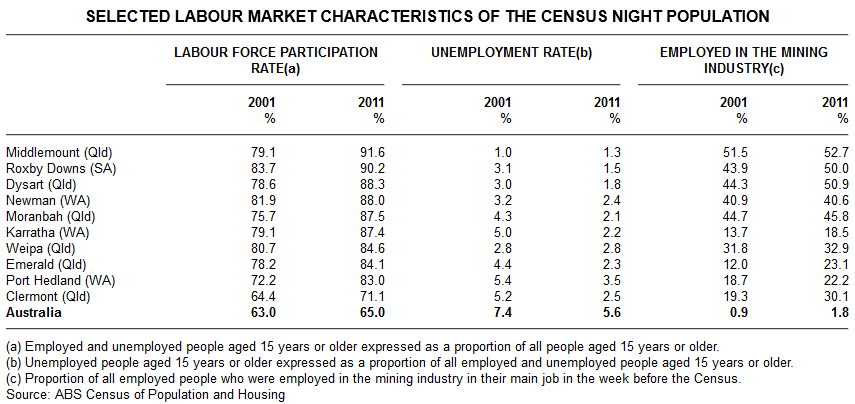
With the mining industry also paying more than any other industry in Australia (see next table).
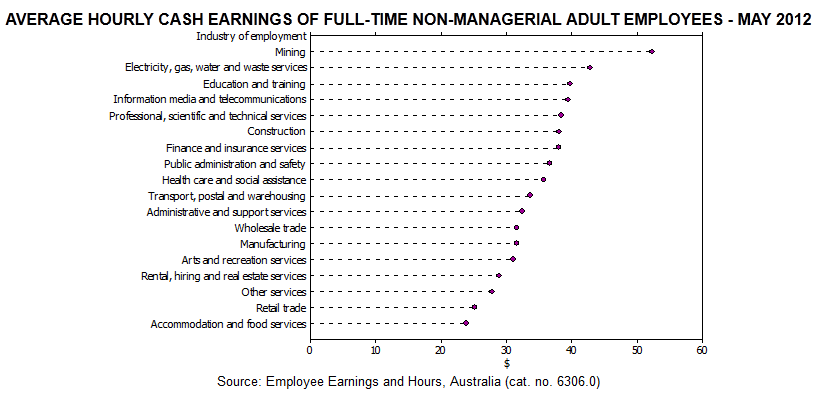
Finally, it is also interesting to note the high share of construction workers in mining towns, reflecting the boom in mining-related capital investment and increased house building (see next chart).
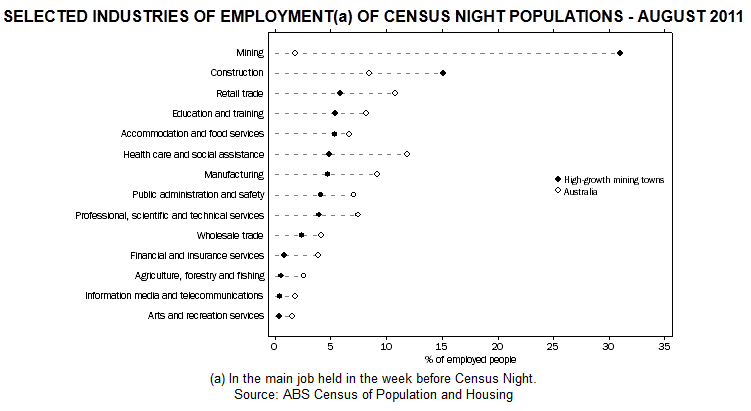
To some extent, the construction industry is an ancillary industry to the mining industry. Because of the need to build infrastructure to enable a mining operation to eventually extract, process and transport minerals to buyers, a construction phase usually precedes the mining phase. Strong demand for housing in a high-growth town may also contribute to a relatively elevated level of construction industry employment in that town.

